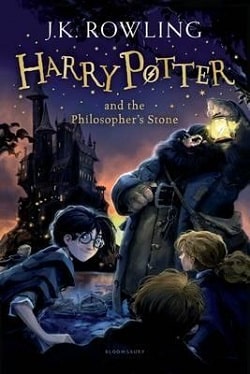In another covert deal some four thousand prisoners were sold – for varying sums according to desirability – to the USA and Russia. The Russians wanted any Chechens and (as a favour to Tashkent) any anti-Tashkent Uzbeks.
The original army that surrendered was over fourteen thousand strong but their numbers were coming down. Finally the Northern Alliance announced to the world media, streaming north to cover the real war story, that it had only eight thousand prisoners.
Then it was decided to hand over a further five thousand to the Uzbek commander, General Dostum. He wished to take them far to the west, to Sheberghan inside his own territory. They were packed into steel freight containers without food or water and so compressed they could only stand, straining upwards for the air pocket above their heads. Somewhere on the road west it was agreed to give them air holes. This was done with heavy machine guns that went on firing until the screaming stopped.
Of the remaining 3,015 the Arabs were selected out. They came from every part of the Muslim world: there were Saudis, Yemenis, Moroccans, Algerians, Egyptians, Jordanians and Syrians. The ultra-radical Uzbeks had been shipped back to the tender mercies of Tashkent and most of the Chechens also, but a few had managed to remain. Through the campaign the Chechens had earned the reputation of being the most ferocious, cruel and suicidal of all.
The balance of 2,400 remained behind in Tajik hands and have not been heard of since. Izmat Khan was spoken to by one of the selectors in Arabic. He replied in Arabic and was thought to be an Arab for that reason. He bore no badges of rank, was filthy, matted, hungry and exhausted. When he was pushed in a certain direction he was too tired to protest. Thus he ended up one of the six Afghans in the group destined to be sent west to Mazar-e-Sharif and into the hands of Dostum and his Uzbeks. By this time the western media were watching and the prisoners were given a guarantee of safe conduct by the newly arrived United Nations.
Trucks were found from somewhere and the six hundred were loaded aboard for the journey west along the pitted track to Mazar. But their final destination would not be the city itself but a huge prison fortress ten miles further west.
So they came to the mouth of hell, but it was called the fort of Qala-i-Jangi.
The conquest of Afghanistan, if measured from the first bomb to the fall of Kabul to the Northern Alliance, took about fifty days, but special forces from both allied countries were operational inside Afghanistan well before that. Mike Martin yearned to go with them but the British High Commission in Islamabad was adamant it needed him on the spot to liaise with the Pakistani army brass.
Until Bagram. This vast ex-Soviet air base north of Kabul was clearly going to be a major allied base during the eventual occupation. Taliban aircraft based there were gutted wrecks and the control tower was a ruin. But the sheer size of the runway, the numerous huge hangars and the living quarters where the Soviet garrison had once lived were all restorable with time and money.
It was captured in the third week of November and a team of Special Boat Squadron men moved in to stake the British claim. Mike Martin used the news as a first-rate excuse to hitch a lift from the Americans at Rawalpindi airfield to go and have a look at the place, as he put it.
It was bleak and comfortless but the SBS had ‘liberated’ a hangar all of their own before the Americans took the lot and were hunkered down at the back, as far from the icy wind as possible.
Soldiers have a remarkable talent for making a kind of home out of the weirdest places and the special forces are the aces because they seem to find themselves in places weirder than most. The SBS unit of twenty had gone foraging with their long-base Land-Rovers and seized a series of steel freight containers which had been dragged inside.
With drums, planks and a bit of ingenuity these were being turned into billets with beds, sofas, tables, electric lights and, supremely important, a power point to plug in the kettle and brew up mugs of tea.
It was on the morning of 26 November that the unit CO told his men: ‘There seems to be something going on at a place called Qala-i-Jangi, east of Mazar. Some prisoners appear to have risen in revolt, taken their guards’ weapons, and are putting up a fight. I think we should have a look.’
Six Marines were chosen and two Land-Rovers allocated and fuelled. As they were about to leave, Martin asked: ‘Mind if I tag along? You might be able to use an interpreter.’
The CO of the small SBS unit was a Marine captain. Martin was a Para colonel. There was no objection. Martin boarded the second vehicle beside the driver. Behind him two Marines crouched over the .50-calibre M2 machine gun. They headed north on the six-hour drive, through the Salang Pass to the northern plains, the city of Mazar and the fort of Qala-i-Jangi.
The exact incident that triggered the massacre of the prisoners at Qala-i-Jangi was disputed at the time and will remain so. But there are compelling clues.
The western media, never shy of getting something completely wrong, persistently called the prisoners Taliban. They were the opposite. They were, in fact, with the exception of the six Afghans included by accident, the defeated army of Al-Qaeda. As such, they had come to Afghanistan specifically to pursue jihad, to fight and to die. What were trucked west from Kunduz were the six hundred most dangerous men in Asia.
What met them at Qala were one hundred partly trained Uzbeks under a desperately incompetent commander. Rashid Dostum himself was away; in charge was his deputy Sayid Kamel.
Among the six hundred were about sixty of three non-Arab categories. There were Chechens who, suspecting back at Kunduz that to be selected for shipment to the Russians was a recipe for death, avoided the cull. There were anti-Tashkent Uzbeks who had also worked out that only a miserable death awaited them back in Uzbekistan and hidden themselves. And there were Pakistanis who, wrongly, avoided repatriation to Pakistan where they would have been set free.
The rest were Arabs. They were, unlike many of the Taliban left behind at Kunduz, volunteers, not pressed men. They were all ultra-fanatical. They had all been through the AQ training camps; they knew how to fight with ferocity and skill. And they had little desire to live. All they asked of Allah was the chance to take a few westerners or friends of westerners with them and thus to die shahid, or martyr.
The fort of Qala is not constructed as a western fort. It is a huge, ten-acre compound containing open spaces, trees and one-storey buildings. The whole space is enclosed by a fifty-foot wall, but each side is sloped so that a climber can scramble up the ramp and peer over the parapet at the top.
This thick wall plays host to a labyrinth of barracks, stores and passages with, beneath them, another maze of tunnels and cellars. The Uzbeks had only captured it ten days earlier and seemed not to know that there was a Taliban armoury and magazine stored at the southern end. That was where they shooed the prisoners.
At Kunduz the captives had been relieved of their rifles and RPGs, but no one did a body search. Had they been frisked the captors would have realized almost every man had a grenade or two hidden inside his robes. That was how they arrived in the motorcade at Qala.
The first hint came on the Saturday night of their arrival. Izmat Khan was in the fifth truck and heard the boom from a hundred yards away. One of the Arabs, gathering several Uzbeks around him, detonated his grenade, blowing himself and five Uzbeks to pemmican. Night was coming down. There were no lights. Dostum’s men decided to do body searches the next morning. They herded the prisoners into the compound without food or water and left them, squatting on the ground surrounded by armed but already nervous guards.
At dawn the searches began. The prisoners, still docile in their battle-fatigue, allowed their hands to be tied behind them. As there were no ropes the Uzbeks used the prisoners’ turbans. But turbans are not ropes.
One by one the prisoners were hauled upright to be frisked. Out came handguns, grenades – and money. As the money piled up it was taken away to a side room by Sayid Kamel and his deputy. An Uzbek soldier, peering through the window a little later, saw the two men pocketing the lot. The soldier entered to protest and was told in no uncertain terms to get lost. But he came back with a rifle.
There were two prisoners who saw this and had worked their hands free. They entered the room after the soldier, seized the rifle and used its butt to beat all three Uzbeks to death. As there had been no shooting, nothing was noticed, but the compound was becoming a powder keg.
The Americans from the CIA, Johnny ‘Mike’ Spann and Dave Tyson, had entered the area and Mike Spann began a series of interrogations right out in the open. He was surrounded by six hundred fanatics whose only ambition before going to Allah was to kill an American. Then some Uzbek guard saw the armed Arab and yelled a warning. The Arab fired and killed him. The powder keg went up.
Izmat Khan was squatting on the dirt waiting for his turn. Like others he had worked his hands free. As the shot Uzbek soldier fell, others atop the walls opened up with machine guns. The slaughter had begun.















